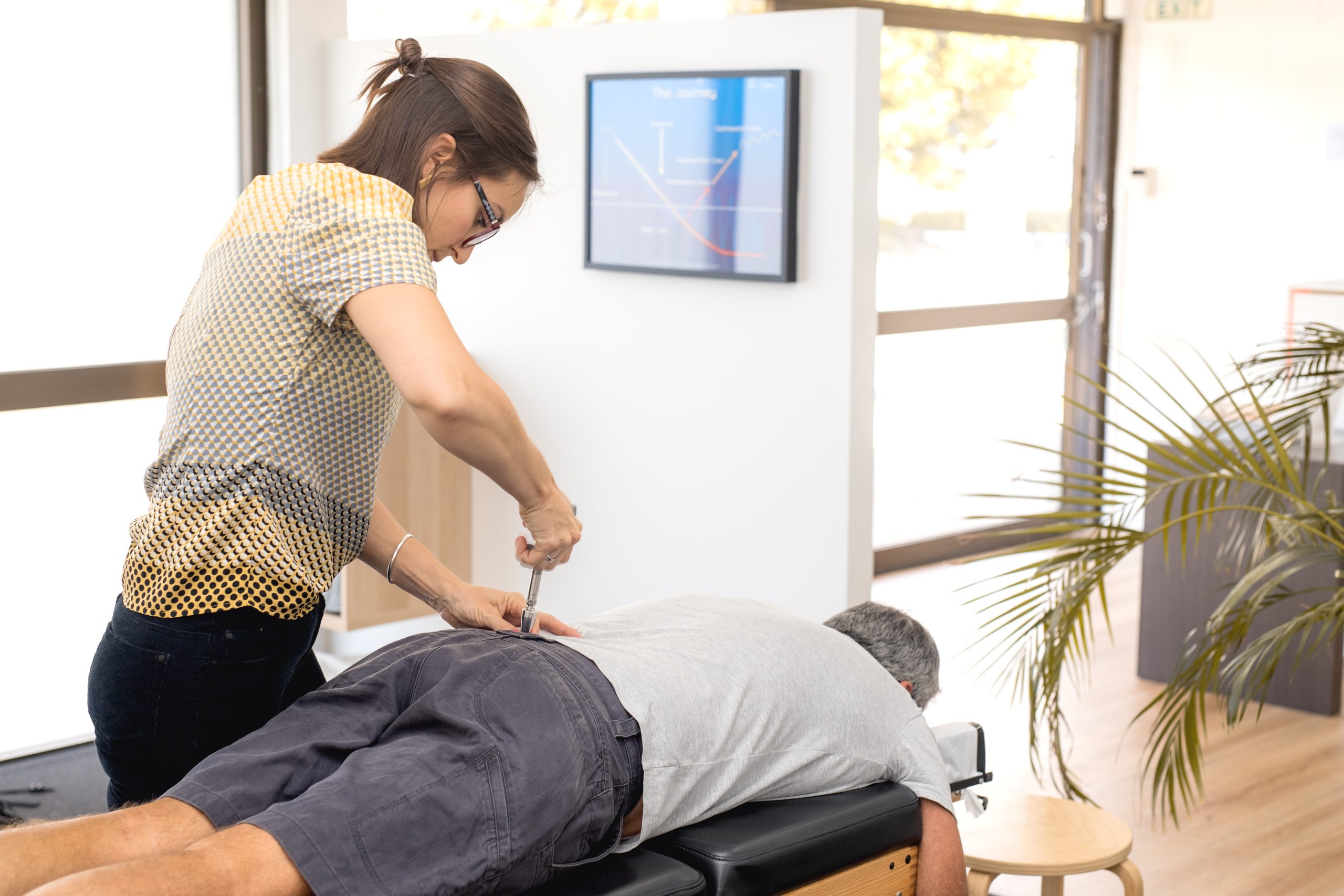Back and neck pain are among the leading causes of disability across the globe, often stemming from issues like herniated discs, spinal stenosis, degenerative disc disease, or nerve root compression. For patients experiencing these debilitating conditions, spinal decompression offers a path toward long-term relief and improved mobility.
In this guide, we’ll explore two primary spinal decompression approaches: non-surgical spinal decompression therapy and surgical spinal decompression procedures. We’ll break down how each method works, the equipment used (like spinal decompression machines and traction tables), who it’s for, and what patients can expect in terms of recovery, risk, and long-term outcomes.
What Is Spinal Decompression?
Spinal decompression is a treatment method designed to relieve pressure on the spine’s discs, nerves, and vertebrae. This pressure can result in severe pain, limited mobility, and nerve-related issues such as numbness or tingling. Decompression therapy works by creating more space within the spinal column, allowing inflamed or compressed areas to heal and regain function.
There are two main techniques:
- Non-surgical spinal decompression – A conservative, machine-assisted therapy that uses motorized traction to stretch the spine.
- Surgical spinal decompression – A medical procedure that physically removes bone or disc material to alleviate nerve pressure.
Each has distinct benefits, limitations, and patient eligibility considerations.
Non-Surgical Spinal Decompression
How It Works
Non-surgical spinal decompression therapy is a gentle, computer-guided treatment that relieves pressure on compressed spinal discs and nerves. Unlike traditional traction, which applies a static pull, decompression therapy uses a motorized table to deliver calculated, rhythmic stretching and relaxation cycles to the spine. This approach not only prevents muscle resistance but also encourages a healing response within the disc tissue.
Here’s what a typical session looks like:
- The patient lies comfortably on a specialized decompression table, either face-up or face-down.
- A padded harness is secured around the pelvis and sometimes the chest, depending on the location of the issue.
- The decompression machine applies controlled traction, gently stretching the spine and then relaxing it in intervals.
- Each cycle creates negative intradiscal pressure, a vacuum effect that helps:
- Retract bulging or herniated disc material
- Reduce pressure on pinched nerves
- Allow oxygen, water, and nutrients to re-enter the disc and surrounding tissues
- Retract bulging or herniated disc material
Over time, this therapy promotes disc rehydration, reduces inflammation, and encourages structural healing without the need for surgery.
Equipment Used
Spinal Decompression Machine
These machines are highly sophisticated, often equipped with real-time feedback systems to adjust pull force based on the patient’s muscle resistance. Top models (like the DRX9000 or Triton DTS) offer lumbar and cervical decompression capabilities, and some can treat both simultaneously.
Features may include:
- Digital interface for precise treatment programming
- Pressure sensors to prevent muscle guarding
- Patient comfort controls and pre-set therapy protocols
Decompression Table
These cushioned tables are motorized and often segmented to adjust for body positioning and flexibility. They may tilt or articulate for lumbar (lower back) or cervical (neck) decompression.
Common Conditions Treated
Non-surgical spinal decompression is ideal for addressing disc- and nerve-related spinal conditions, including:
- Herniated or bulging discs – Disc material presses on nearby nerves, causing pain or numbness
- Degenerative disc disease – Discs lose hydration and height, leading to nerve compression and stiffness
- Sciatica – Pain radiating from the lower back down the leg, often due to disc pressure on the sciatic nerve
- Spinal stenosis – Narrowing of the spinal canal, which puts pressure on the spinal cord or nerves
- Facet syndrome – Inflammation or arthritis in the small stabilizing joints of the spine
- Nerve root compression causing neuropathy – Tingling, burning, or weakness in the extremities due to spinal nerve impingement
This therapy is often part of a broader treatment plan that may include chiropractic care, massage therapy, and physical rehabilitation.
Benefits of Non-Surgical Spinal Decompression
- Non-invasive and drug-free: Avoids the risks of surgery or dependence on pain medications
- Painless and relaxing: Most patients find the treatment soothing—some even fall asleep during sessions
- No downtime: Resume normal daily activities immediately after therapy
- Customized for each patient: Traction intensity and angle are personalized in real time for maximum results
- Versatile as a complementary therapy: Works well alongside chiropractic adjustments, massage, physical therapy, and neuropathy-specific treatments
Surgical Spinal Decompression
When Surgery Becomes Necessary
While non-surgical spinal decompression is highly effective for many patients, there are instances where surgical intervention is the only viable option. Surgery is typically reserved for patients with severe structural spinal issues or those who haven’t responded to conservative treatments such as physical therapy, chiropractic care, or non-surgical decompression.
You may be a candidate for surgical spinal decompression if you experience:
- Severe nerve compression causing significant loss of motor function (e.g., foot drop or muscle atrophy)
- Persistent or worsening symptoms after several months of conservative care
- Progressive neurological deficits, such as:
- Loss of bladder or bowel control (a red flag for cauda equina syndrome)
- Numbness in the groin or saddle area
- Loss of bladder or bowel control (a red flag for cauda equina syndrome)
- Structural deformities or instability, including spinal fractures, scoliosis, or spondylolisthesis, which may require stabilization and realignment
Surgery is often recommended not just to relieve pain but to prevent permanent nerve damage or disability. In some cases, delaying surgical treatment may lead to irreversible nerve degeneration.
Common Surgical Techniques
Each surgical procedure is selected based on the underlying cause of spinal compression, the location of the problem, and the patient’s overall health. The most common surgical spinal decompression techniques include:
1. Laminectomy
- Purpose: To remove the lamina (the rear portion of the vertebra) and create more space within the spinal canal.
- Used For: Spinal stenosis, bone spurs, and general narrowing of the spinal canal.
- Effect: Decompresses the spinal cord and surrounding nerves to relieve pressure and improve mobility.
2. Discectomy
- Purpose: To remove part or all of a herniated disc that is compressing a nearby nerve root.
- Used For: Herniated discs and disc-related sciatica.
- Effect: Reduces inflammation and alleviates pain radiating into the arms or legs.
3. Foraminotomy
- Purpose: To widen the foramen, the small passageway where nerve roots exit the spinal column.
- Used For: Foraminal stenosis and nerve root impingement.
- Effect: Frees up compressed nerves and improves nerve signal transmission.
4. Spinal Fusion
- Purpose: To permanently fuse two or more vertebrae together using bone grafts, screws, or rods.
- Used For: Spinal instability, deformities, or as a follow-up to other procedures.
- Effect: Prevents abnormal or painful motion but may reduce flexibility in the fused segment.
Risks and Considerations
Like all major surgeries, spinal decompression procedures carry potential risks and require careful consideration. While modern surgical techniques and tools have improved safety, patients should be fully informed of the following:
Potential Risks:
- Infection at the incision or surgical site
- Bleeding and blood clots
- Nerve damage, which can result in lingering pain, numbness, or weakness
- Spinal fluid leaks, especially during procedures involving the dura mater
- Adverse reactions to anesthesia
Recovery Time:
- Patients typically require a hospital stay of 1–5 days, depending on the procedure.
- Full recovery can take 6 weeks to 6 months, with physical therapy often needed for rehabilitation.
- Spinal fusion patients may experience a longer recovery period and some permanent loss of spinal flexibility.
Long-Term Considerations:
- There’s a risk of adjacent segment disease, where the vertebrae above or below a fused segment degenerate over time.
- “Failed back surgery syndrome” refers to cases where surgery does not adequately relieve symptoms or leads to new issues.
Benefits
Despite the risks, surgical spinal decompression can offer life-changing relief for patients with severe or advanced spinal conditions. The key benefits include:
- Effective relief of nerve pressure in severe or urgent cases
- Rapid reduction of symptoms in patients with progressive neurological deficits
- Permanent correction of structural deformities or instability
- Improved mobility and quality of life, especially for patients who couldn’t walk, stand, or function normally due to nerve compression
- Reduced need for long-term medications or repeat conservative therapies
Comparing Surgical vs. Non-Surgical Spinal Decompression
| Category | Non-Surgical | Surgical |
| Invasiveness | Non-Invasive | Invasive |
| Anesthesia | None | General anesthesia requried |
| Recovery Time | Minimal to none | 6 weeks to 6 months |
| Ideal Candidates | Mild to moderate disc issues | Severe compression or instability |
| Cost | Generally lower, often covered by insurance | Higher cost, may require hospitalization |
| Risks | Mild soreness, minimal complications | Infection, bleeding, nerve damage |
| Outcome Timeline | Gradual (4-6 weeks) | Immediate to moderate-term relief |
| Use of Equipment | Decompression Table/ machine | Surgical tools, anesthesia, imaging |
Who Should Consider Non-Surgical Spinal Decompression?
You may be a good candidate if:
- You have a herniated or bulging disc
- You’re experiencing back pain, sciatica, or neuropathy
- You haven’t responded to physical therapy or chiropractic care alone
- You want to avoid surgery or long-term medication use
- Your condition is not caused by fractures, infections, or tumors
Not ideal for:
- Pregnant individuals
- Patients with severe osteoporosis
- Those with spinal implants or previous spinal fusion surgery
What to Expect from Non-Surgical Therapy
During a Session
- Lie comfortably on a decompression table
- Harness secured around the hips or torso
- Machine performs gentle stretch/relax cycles
- Sessions last 20–45 minutes
- Most patients report no discomfort—some fall asleep
After a Session
- You may feel immediate relief or gradual improvement
- Some patients feel mild soreness (similar to post-stretching)
- Hydration and light activity encouraged
- Typically paired with rehab, stretching, or massage for optimal outcomes
Frequently Asked Questions (FAQ)
What is non-surgical spinal decompression?
Non-surgical spinal decompression is a therapy that uses a motorized traction table to gently stretch the spine, reducing pressure on spinal discs and nerves to relieve pain and promote healing.
How does a spinal decompression machine work?
A spinal decompression machine applies controlled, cyclic stretching to the spine. It uses sensors to monitor resistance and adjusts pull force accordingly, making the experience safe and tailored to each patient.
Is non-surgical decompression therapy safe?
Yes. It’s FDA-cleared, non-invasive, and considered very safe when administered by trained professionals. It avoids the risks associated with surgery or long-term medication use.
How do I know if I need surgery or non-surgical decompression?
If your symptoms are severe, progressing, or caused by structural deformities, surgery may be necessary. If you have mild to moderate disc compression without neurological decline, non-surgical options are often effective.
Does spinal decompression therapy hurt?
Most patients feel no pain, only a gentle pulling sensation. Some feel mild soreness after their first few treatments, similar to post-exercise muscle fatigue.
Conclusion: Choosing the Right Path for Your Spine
Both surgical and non-surgical spinal decompression techniques offer relief, but choosing the right option depends on your diagnosis, severity, and personal health goals. While surgery may be necessary for advanced spinal conditions, many patients find significant relief through non-surgical spinal decompression therapy, especially when combined with chiropractic care, physical therapy, or massage.
If you’re experiencing persistent back pain, sciatica, or neuropathy, don’t wait. Understanding your options is the first step toward taking back your comfort, mobility, and quality of life.




